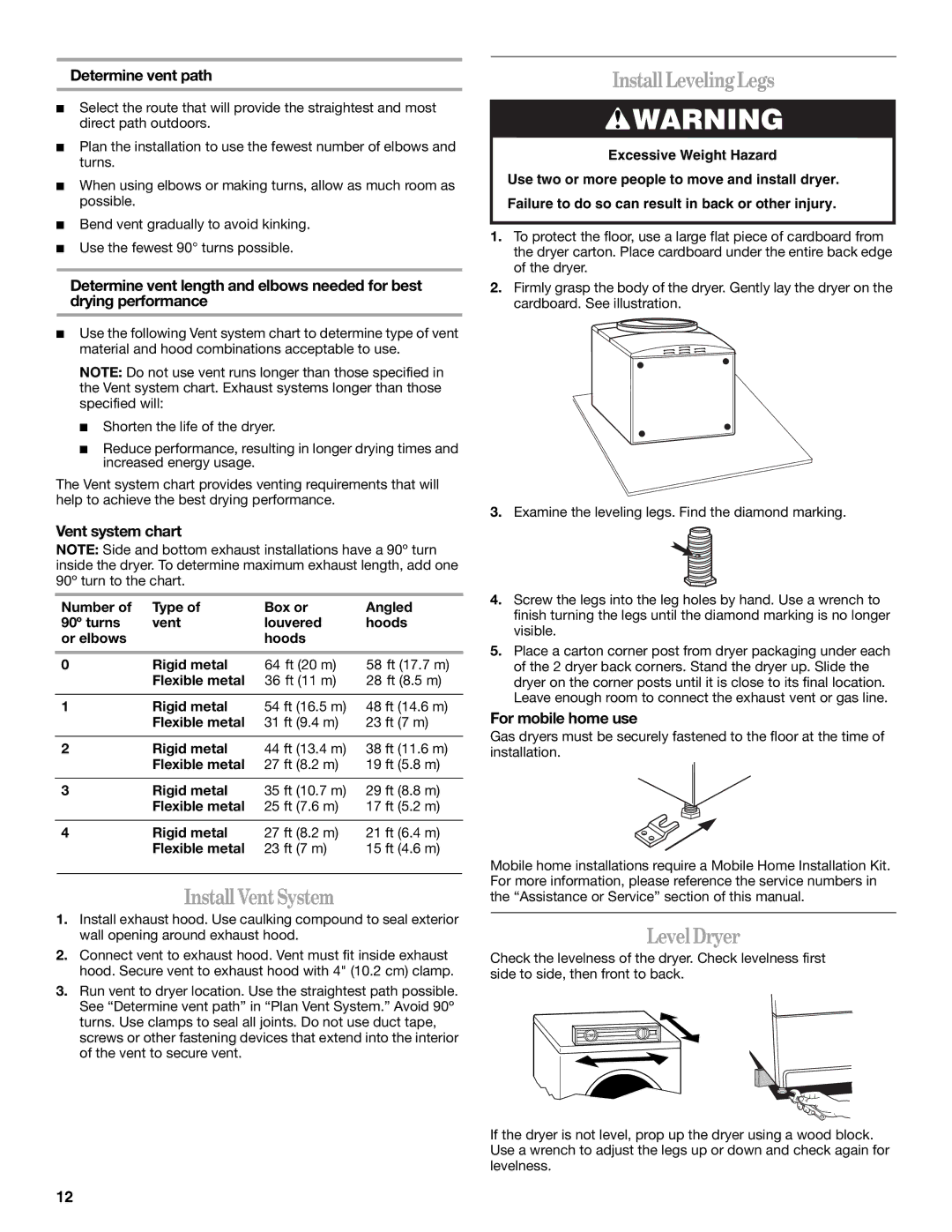ELECTRONIC GAS DRYER specifications
The Whirlpool Electronic Gas Dryer is an innovative household appliance designed to streamline your laundry experience while ensuring optimal performance and efficiency. Packed with advanced features and cutting-edge technologies, this gas dryer caters to the needs of modern consumers who prioritize convenience, energy efficiency, and superior fabric care.One of the standout features of the Whirlpool Electronic Gas Dryer is its precise drying technology, which includes moisture sensing capability. This intelligent system detects the moisture level in your clothes, automatically adjusting drying time accordingly. This not only helps prevent overdrying, which can damage fabrics and reduce lifespan, but also conserves energy by reducing unnecessary drying cycles.
Another significant aspect of this dryer is its variety of drying cycles. From Delicate and Heavy Duty to Quick Dry settings, the Whirlpool Electronic Gas Dryer offers customizable options for various fabric types and load sizes. This flexibility is enhanced by the inclusion of specialty cycles, such as Sanitize and Steam Refresh, which address specific care needs for items like bedding and athletic wear.
Energy efficiency is a key consideration in the design of the Whirlpool Electronic Gas Dryer. With an Energy Star certification, it meets stringent energy efficiency guidelines, helping homeowners save on utility bills while reducing their ecological footprint. This dryer uses gas as its primary heat source, which is typically more cost-effective and environmentally friendly compared to electric alternatives.
User-friendly controls make operating the Whirlpool Electronic Gas Dryer a breeze. The intuitive digital display allows for easy selection of drying cycles and settings, while the end-of-cycle signal alerts you when your laundry is ready. Additionally, the front-loading design and large capacity drum can accommodate substantial loads, making it ideal for busy households.
The durable construction of the Whirlpool Electronic Gas Dryer ensures long-lasting performance. High-quality materials and robust components contribute to its reliability, while the sleek design adds a modern touch to any laundry room. Overall, the Whirlpool Electronic Gas Dryer combines the latest technologies with thoughtful features, providing an effective solution for tackling laundry day challenges with ease and efficiency.

